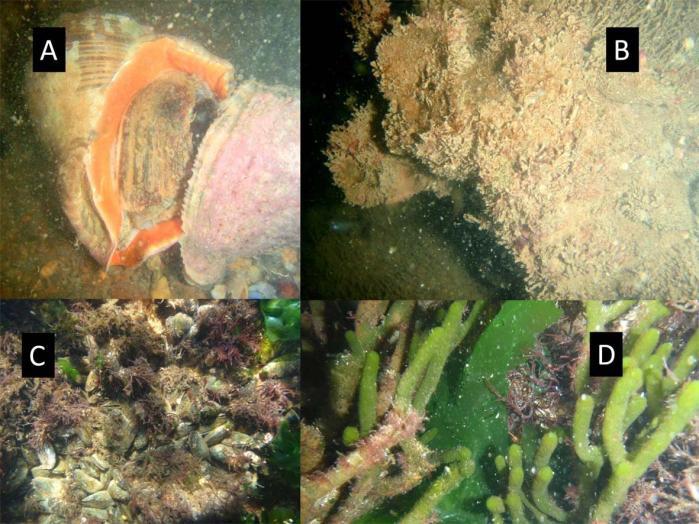Alvar Carranza
Other projects
15 Dec 2004
Pilot Programme for Ecosystemic Monitoring in Cerro Verde (Uruguay): Benthic Invertebrates as a Tool for Conservation - Phase I
4 Dec 2006
Pilot Programme for Ecosystemic Monitoring in Cerro Verde (Uruguay): Benthic Invertebrates as a Tool for Conservation - Phase II
The project aims to the conservation of mussel beds and associated biodiversity, via the control of and invasive species and the exploration of new avenues for the management of the artisanal fishery.
Oyster reefs and mussel beds may be among the most endangered marine ecosystems in the world. In Latin America, overexploitation, habitat loss and invasive species are clearly the main threats to native shellfish. Subtidal beds of Mytilus edulis near Punta del Este, Uruguay are not the exception, since the stock can be considered as fully to overexploited by an artisanal fishery. Furthermore, the alien Rapa Whelk Rapana venosa that preys on mussels has recently been found in huge amounts at the areas. In this vein, the aim of this proposal is to perform a diagnosis of the current status of these mussel beds, and, in parallel, explore co-management options with the local community of artisanal fishermen.

In Gorriti Island, high densities of the Rapa Whelk were found (A) associated with rocks showing little or no mussel cover (B), in contrast with sub-tidal areas where the Whelk is not present (C and D). © Alvar Carranza and Jorge Durán.
The design of a pilot program aiming to eradicate or control the Rapa whelk will also be explored. The opening of a local market for Rapa whelk directed to Punta del Este touristic industry may provide an incentive to its exploitation, linking economic issues for artisanal fishermen and helping to ensure the long-term sustainability of mussel populations.
This initiative is part of a South American network of related projects, directed to generate and link small, local scale projects in several countries. The goals of this initiative are:
a) to raise the awareness of the scientific community in relation to the conservation of South American native bioengineering bivalves;
b) to improve the diagnosis on the conservation status of South American Native Bioengineering Bivalves,
c) to Identify and map conservation opportunities (i.e., reefs in best condition), discussing and disseminating lessons learned from current conservation and management experiences aiming to increase or expand their effectiveness,
d) develop a common methodology for condition analyses. This methodology will be useful for the diagnosis and can serve as a basis to assess the success of current or future conservation initiatives,
e) explore ways to develop a coordinated conservation program, aiming to conserve shellfish populations at a continental scale.
In addition, new funding sources will be identified to sustain a South American network for Shellfish Conservation. Communication of the results of the Uruguayan project to local stakeholders and Uruguayan Government, via technical reports, seminars, national or regional congress, and scientific publications.